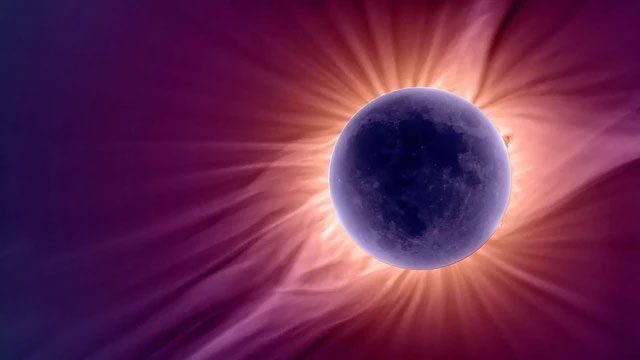According to NASA, three rockets carrying various instruments will launch into the sky on April 8, as the United States is enveloped in a total solar eclipse.
Engineers from NASA’s Goddard Space Flight Center refer to the total solar eclipse on April 8 as “a few precious minutes”, as the three rockets will carry out a special mission.
According to Live Science, NASA explains that the scientific instruments brought to the sky by these three rockets will study the changes that occur during the brief moment of darkness that envelops the Earth during the eclipse.

Image showing solar radiation affecting the surroundings during the eclipse – (Photo: NASA).
The sudden transition between day and night is known to cause a significant drop in temperature, enough to trick many animals into exhibiting nocturnal behaviors.
However, scientists still understand very little about how this brief moment of darkness affects the ionosphere, the part of the Earth’s atmosphere that extends from about 90 to 150 km above the planet’s surface.
Ultraviolet radiation from the Sun typically strips electrons from atoms, creating abundant charged particles that rise into the upper atmosphere and form this layer.
Therefore, the ionosphere thins when the Sun cools, as ions recombine into neutral atoms before being torn apart by the next dawn.
With the three rockets ready for launch, NASA hopes to collect sufficient data on the disturbances in the ionosphere as darkness covers it briefly for just a few minutes.
These disturbances are believed to potentially affect the operation of radio and satellite equipment.
The solar eclipse on April 8 is an event eagerly awaited by many Americans, as the central path of the eclipse will sweep diagonally across Central America from the Southwest, through the United States, and into parts of Eastern Canada.
These areas will witness a total solar eclipse, while some surrounding regions will see a partial eclipse.
Unfortunately, this phenomenon cannot be observed from Vietnam.


















































